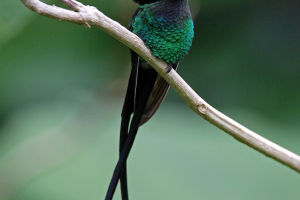The owl's head is very flexible and can turn not only backwards but also upwards and downwards, seemingly turning 360 degrees in any direction. We know from the anatomy that owls can turn their heads up to about 270 degrees.
Owls need this ability because their eyes are tubular like a telescope, rather than spherical like mammals.
Tubular eyes cannot be turned as widely as spherical eyes, so owls must turn their heads in a wider range of angles to see the world around them.
However, an animal's head turns at such a wide angle that a problem may arise: the large arteries in the neck may be torn, or at least prevent blood from reaching the brain. But this does not happen with owls.
If humans try to rotate their heads at such a large angle so quickly, they can tear the lining of the arteries, which can lead to blood clots and cause strokes (in addition to breaking the neck).
The carotid and vertebral arteries in the neck of most animals (both owls and humans) are very fragile and vulnerable to even minor tears in the lining of the vessels.
To observe the condition of the blood vessels of owls as they turn their necks, scientists once injected dye into the blood vessels of a dozen owl carcass specimens and observed through CT scans that the glistening fluid spread through the birds' arteries like blood. They then twisted the specimens' heads to see what was happening.
After making the CT scan images, they also injected a plastic-like substance into the veins of dead snowy owls, cross-spotted forest owls, and great horned owls, and dissected the animals to map the paths and locations of the blood vessels.
They discovered several unique features that had not been previously identified. First, the channels that allow arteries to pass through the owls' jugulars or vertebrae are much larger than those in other birds or humans.
The channels in human vertebrae are approximately the same size as the diameter of an artery, but the channels in owl vertebrae are approximately 10 times larger. These bony channels also contain cushioned air sacs, which are used.
The scientists also noted that the base of the owl's carotid artery is more relaxed than in other animals so that when their heads are turned to the extreme, the artery does not times stretch or break.
These findings are just a typical example of how birds are fully adapted to their environment, scanning their surroundings despite the relative fixity of their eyes.
Owls are fascinating animals, and by understanding the neck and head configuration of this bird, bionics could be advanced and engineers could design more flexible instruments, such as robotic hands on Mars rovers, among others.


